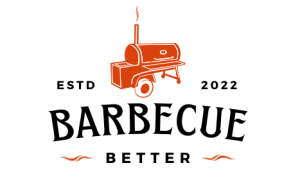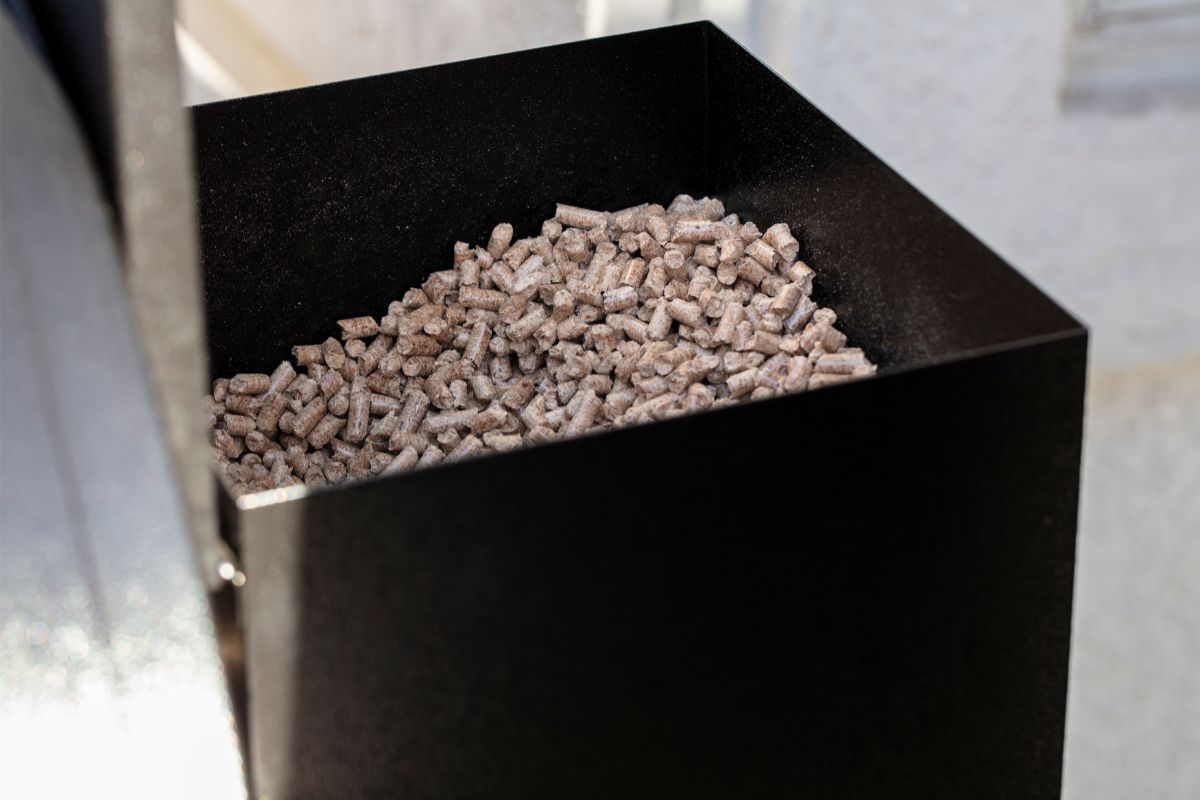Properly sizing and building the firebox is essential for achieving consistent results and optimal performance from your smoker. The size of a firebox should be 1/3 the size (volume) of the cooking chamber.
A firebox is an essential part of a BBQ smoker where you burn wood to generate heat and smoke to cook and flavor meat.
Whether you are a seasoned pitmaster used to smoking brisket or new to the art of smoking, this article will provide you with everything you need to build a firebox for your smoker that will produce mouthwatering results every time!
How Do You Make a Firebox for a Smoker?
Properly sizing and building a firebox for a DIY offset smoker can mean the difference between a successful and enjoyable smoking experience, and one that is frustrating and disappointing.
A firebox is an area where you place wood. Wood is added in the middle to ensure consistent airflow. Air flows from the firebox and then travels to the cooking chamber. When airflow is good, the BBQ results are also good.
- To make a firebox, measure roughly 1/3 of the volume of your cooking chamber. The material should be thick enough to hold the temperature properly and to ensure it does not get damaged by burning coal.
- Get the ¼-inch thick sheet of steel and use 14-gauge steel for exterior insulation.
- Cut the different sides using a circular cutting saw or a cutting torch.
- After cutting down all the sides, start welding. Make sure the edges are properly welded.
- Next, create the door opening and the connection to the cooking area.
- After that, insulate your firebox. Use 1X1/2-inch square tubing for exterior insulation. Position the insulation and tubing into place.
- Complete the build of your firebox by properly covering all sides. Weld any exposed sides as well as the top of the firebox.
How Big Should a Firebox Be on a Smoker?
When sizing a firebox, you should make it approximately ⅓ of the size (volume) of the cooking chamber to provide sufficient heat for your BBQ smoker.
Calculating the Size of the Firebox
The size of your firebox will have a huge impact on the usability and performance of your offset smoker. This calculator can help you determine the correct dimensions for your unique firebox.
Here are some general guidelines for sizing a firebox for a smoker:
- Determine the size of your smoker: The dimensions of the firebox should match the size of your smoker. A large smoker will require a large fire box to accommodate enough fuel to produce enough heat and smoke.
- Consider the fuel you intend to use: The size of your firebox will also depend on the type of fuel you want to use. For instance, wood will require more space to burn than charcoal.
- Determine the expected cooking time: You should also determine the size of your firebox depending on the desired cook time. A long cooking time requires more fuel, so you also need a large firebox.
- Consider the efficiency of your smoker: An efficient smoker requires less fuel to help maintain a consistent temperature. In this case, you can make your firebox smaller.
When sizing the firebox, you should focus on balancing the dimensions to avoid making it too large or too small.
What is a Firebox Made Of?
Fireboxes for BBQ grills and smokers can be made from a variety of materials, including stainless steel, cast iron, and porcelain material.
Heavy-duty steel fireboxes are a popular choice because they are durable, long-lasting, and relatively inexpensive. However, steel can rust over time if it is not properly maintained, and it is not as good at retaining heat as some other materials.
Cast iron fireboxes are another great option. They are extremely durable and are known for their ability to retain heat, which can be beneficial for certain cooking techniques. However, they are also heavy and more expensive than steel fireboxes.
Ceramic fireboxes are made from a particular type of clay fired at high temperatures. They are known for their ability to hold heat and moisture, which can be beneficial for certain types of cooking, such as slow smoking or grilling. Ceramic fireboxes are also relatively lightweight and are easy to move around, but they can be more expensive than stainless steel or cast iron fireboxes.
What is the Difference Between a Firebox and a Grill Box?
A firebox is a compartment in a BBQ grill or smoker that is used to hold the fuel (usually wood or charcoal) to generate heat and smoke for cooking. The fire box is typically located at the bottom or on the side of the grill or smoker, and it is separated from the cooking chamber by a partition or wall.
A grill box, on the other hand, is a device attached to the side of a smoker grill and is used to add an additional grill grate cooking surface or to cook food using a different cooking method. Grill boxes often add a searing surface to a grill or smoker, allowing you to sear food at high temperatures. Grill boxes are also sometimes used to smoke food using a different fuel source, such as wood chips or wood pellets, than what is used in the main firebox.
A firebox is a compartment used to hold the fuel for cooking, while a grill box is an additional cooking surface or a device used to cook food using a different method or fuel source.
How Does a Smoker Firebox Work?
An offset smoker works by generating heat from charcoal or wood pellets in an offset firebox that is found near the cook chamber.
An air vent allows the air to enter the off-set firebox, which provides an essential component of fuel. The air flows around the fuel source and into the cooking area, producing heat around the food.
Oxygen, fuel, and heat are necessary, and the intake damper of the smoker regulates airflow to determine the size of the flames.
With the damper partially closed, airflow is restricted, and the fire doesn’t get out of control. If the damper is fully opened, the fire gets unlimited oxygen so it can quickly get out of control.
What is the Best Wood to Use for a Firebox on a Smoker?
Wood pellets are an excellent choice for smoking because they provide a unique flavor that’s difficult to get from other options. If you have a charcoal BBQ grill, you can still use wood pellets alongside barbecue coals or charcoal briquettes to boost the flavor of your food.
There are many types of wood available, and each one offers a unique flavor. Here are some of my favorites:
- Hickory: Hickory gives food a robust and smoky flavor that is ideal for BBQ.
- Oak: Oak wood has a mild flavor, but it also infuses a nice, smoke flavor into the food.
- Mesquite: Mesquite has a strong, relatively sweet flavor that can be overpowering if you use too much. It is best when tempered by being mixed with a fruitwood.
- Pecan: Pecan has a sweet mild flavor, making it the mild alternative to hickory.
- Maple: Maple adds a slightly sweet flavor to food.
- Cherry: Cherry has a sweet, fruit flavor that is perfect for lamb or beef.
To get the best out of your DIY offset smoker, wood and charcoal are a winning combo for outdoor cooking!
Is it Necessary to Add a Firebox for a Smoker?
A firebox for a smoker is an essential compartment because it holds the fuel (charcoal or wood) used to produce smoke and heat for cooking. Without a fire box, it would be impossible to generate the smoke and heat required for grilling or smoking food.
It is not uncommon to find a firebox attached to a backyard smoker since all smokers require a firebox. Whether in a direct flow or reverse flow smoker, it allows for effective fire management and efficient airflow in the cooking chamber.
Some smokers and grills come with a built-in firebox while others require the addition of a side firebox. Charcoal grills also have a charcoal basket incorporated into their design alongside a side firebox for hassle-free cooking and convenience
If your BBQ smoker or grill doesn’t have a built-in firebox, you need to build one to ensure the unit works for your grilling or smoking needs.
A firebox ensures that air can reach all sides of the wood. Proper airflow is essential for every smoker.

